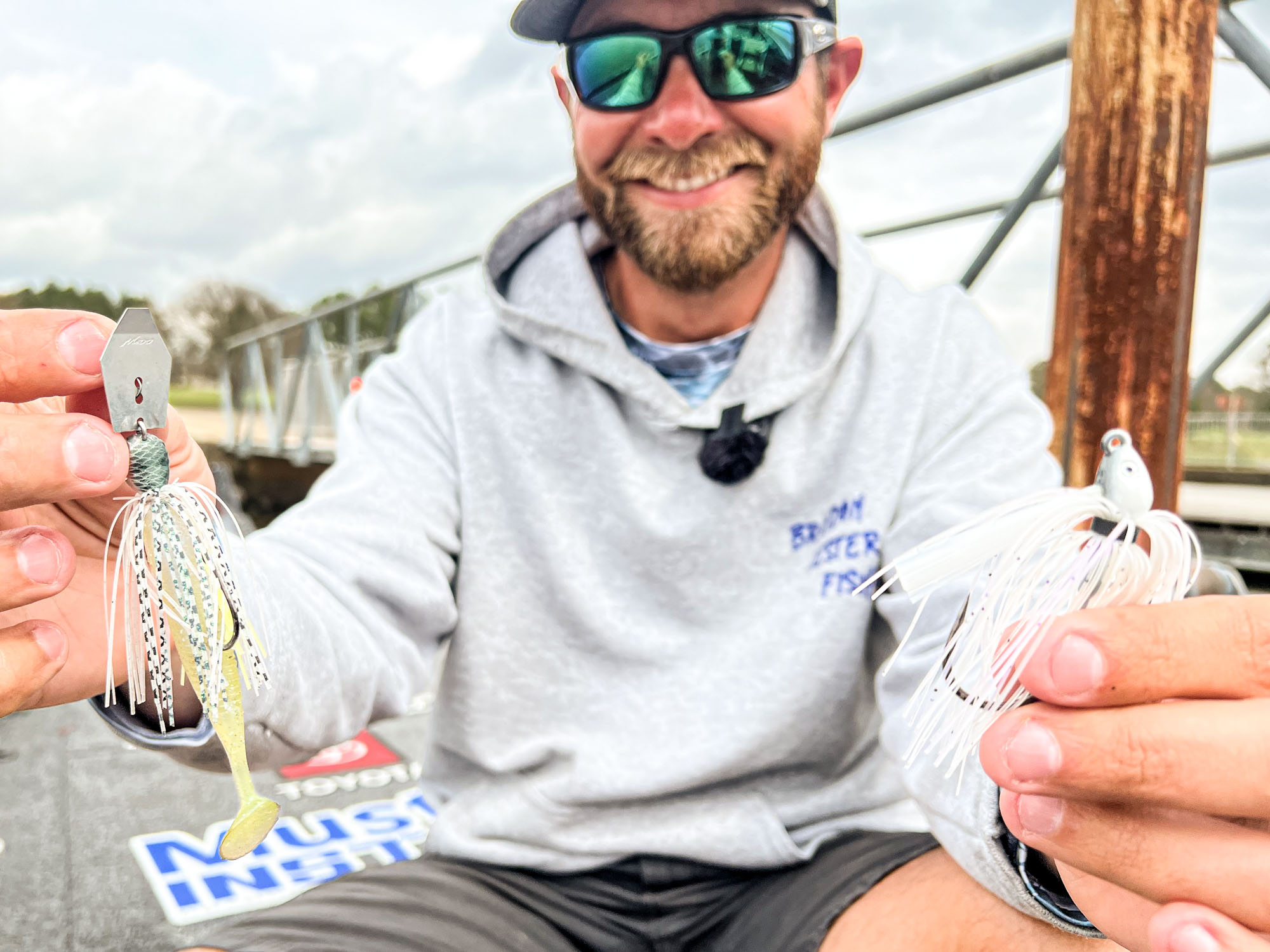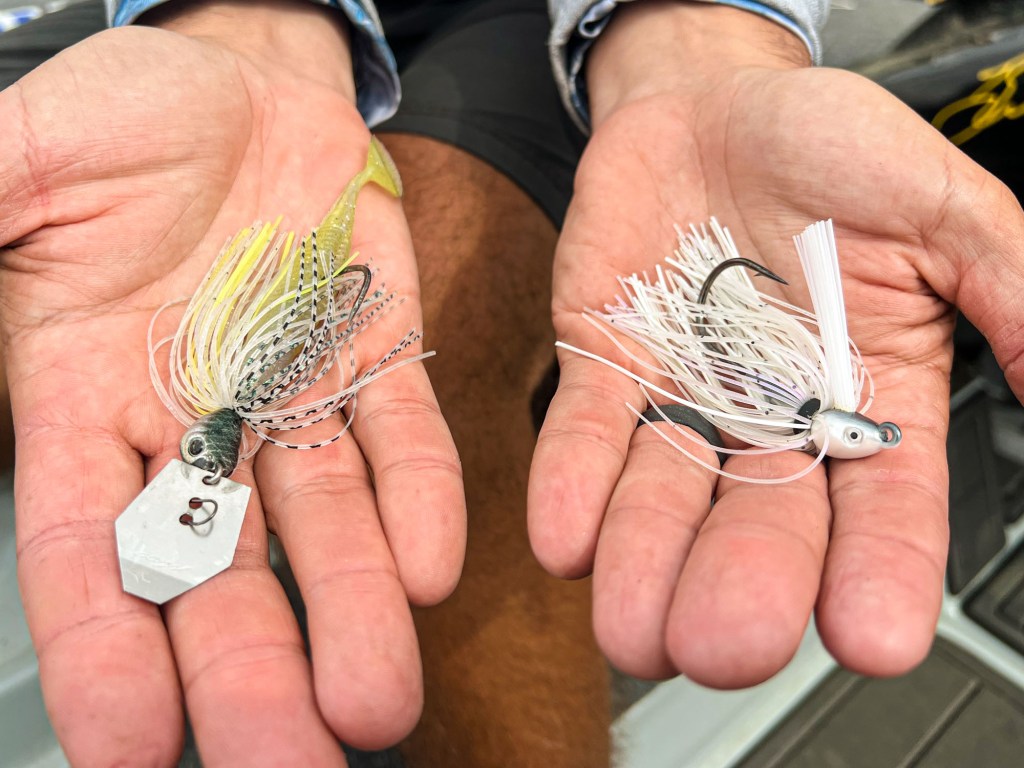
If you’ve been around the bass fishing world for long, Brandon Lester is an angler who needs no introduction. But here’s one just in case you haven’t. For nearly a decade, the consistent Lester lingered around the top third of B.A.S.S. leaderboards, finishing in the money more times than not and racking up dozens of Top 10s and top 20s.
Winning a St. Croix Bassmaster Open and an Elite Series title in 2022 on his way to a second-place finish in the Progressive Bassmaster Angler of the Year race, Lester officially came into his own and has become a well-rounded force to be reckoned with no matter the technique or tournament grounds.
With the wealth of knowledge Lester has accumulated through hours of on-the-water decision making and trial and error, we decided to pick his brain on something that can be a little tricky for anglers to discern at times — when to go with a bladed jig versus when to fish a swim jig.
Picking based on cover
“It’s all about being efficient,” said Lester. “The bladed jig is going to work better when you’ve got some wind, when you’ve got maybe a little off-colored water and when you’re not around super heavy cover. If I’m fishing bank grass, willow grass, stuff like that, it’s going to be more the swim jig.”
Cover is the prevailing difference maker in the eyes of Lester when determining which of these baits to go with. But not just the presence of cover or not, more the type of cover and how it sets up.
“If I’m just fishing a vast open flat or if I’m fishing milfoil, submerged hydrilla, stuff like that, a lot of times I’m going to fish that bladed jig. Because it’s more of a reaction deal, more under the water.”
In these situations, the hard vibrating bladed jig comes by, through or over a patch of vegetation where the bass is hunkered down and generates a reaction strike from the fish. Allowing the bladed jig to bog down a little in the vegetation before ripping it free is another way to trick these bass into bitting, as they are triggered by the aggressive and sudden burst of action.
“The swim jig, you can keep it up higher in the water column, you’ve got more variation there. The bladed jig is more down lower in the water column. Not necessarily on the bottom, but lower.”
Because Lester likes to fish his swim jig high, he typically chooses one weighing 3/8 ounce. These lighter baits are easier to fish more over and through topped out vegetation that’s either stalky or matted with holes and points.
“I have been playing around with a 1/2 ounce some because a 1/2 ounce is just faster, and I feel like that triggers them sometimes a little bit better. But for me right now, most of the time, it’s still a 3/8 ounce.”

Picking a trailer
When looking at both of these lure groups, the baits themselves are only part of the equation. Using different soft-plastic trailers, both of these baits can be used to mimic various types of forage. The trailer selection also effects the speed of each bait and how high or low in the water column it can be fished effectively.
“It just depends on what you’re wanting to do. If you use a big flapping craw-style trailer, it’s going to lift that jig more. So if you’re wanting to keep it right up on top of the water, that’s what you want to do. Now if you’re wanting to to throw it out and just reel it, then I’d just put a swimbait trailer on there.”
The Reaction Innovations Little Dipper is Lester’s swimbait trailer of choice for both the swim jig and the bladed jig. When swapping to craw-style trailers, which Lester does more with swim jigs than he does with bladed jigs, he likes the Zoom Super Speed Craw or the Strike King Rage Tail Craw.
“And it kind of depends on the part of the country too. Because, honestly like down south in Florida on Okeechobee, the Kissimmee Chain and stuff like that, I’ve done better with swimbait-style trailers and just throwing it out there and reeling it.”
“But of course if you get around Alabama in the water willow and stuff like that you put a craw-style trailer on there and put that Alabama shake on it.”
Colors and seasons
When it comes to color selection, Lester keeps it simple. He selects some variation from three main color palettes for both bladed jigs and swim jigs: white, black and blue and green pumpkin. He fine tunes his color selection based on the time of year, water color and forage present.
“If you’re talking about shad, it’s going to be some form of white. If you’ve got colored water, I think straight white is really dang good because it’s bright. Now the cleaner the water gets, I’m going to mix in some more crystal shad, maybe an off-white that blends in a little more.”
As the spring fades into summer and the focus of the bass shifts from shad to bluegill, Lester digs out the black and blue and green pumpkin baits. Both of these colors work well in clear to moderately stained water, with the green pumpkin winning out in the clearer situations and the black and blue having a slight advantage in dingier water.
“I find a lot of times that fish like subtle vibrations in sound in the fall. For example I’ve always done better with one-knocker and silent lipless crankbaits that time of year.”
“For that reason I find myself reaching for a swim jig a lot more in the fall, just because I think fish are more dialed in to a more subtle presentation. I will definitely still pick up a ChatterBait though if it’s a windy day or the water is dirty.”
Once the water temps really start to drop and winter settles in, Lester relies more heavily on the bladed jig.
“I’ve caught bass in water as cold as 42 degrees on a ChatterBait in the winter. It’s purely a reaction bite I believe that time of year, and the hard vibration that a ChatterBait puts off triggers those fish to bite.”
“The swim jig does not have that same triggering ability in the winter in my opinion. The only time I really throw a swim jig in the winter months is if you get an influx of warm rain and fish move shallow and get in some type of bank grass. Then the swim jig gets the nod.”
Lester admittedly doesn’t do a lot of customization to his baits. He offered up the option of adding a little dye to the tips of soft plastic trailers to dress the baits up a bit. And here’s another tweak he’ll do with his swim jigs.
“One thing I do that I think is important is trim the skirt to about 1/8 inch behind the hook. This gives your trailer more room to move freely, and I believe it looks more natural.”
With just a swim jig and a vibrating jig, an angler can fish around various types of cover and forage as well as in all water clarities and through all four seasons. But knowing when to use which is critical. Hopefully Lester cleared up some of this uncertainty to better prepare anglers for their next fishing trip.




